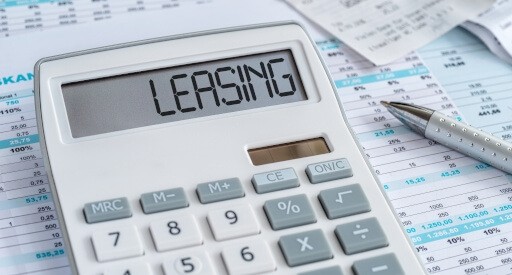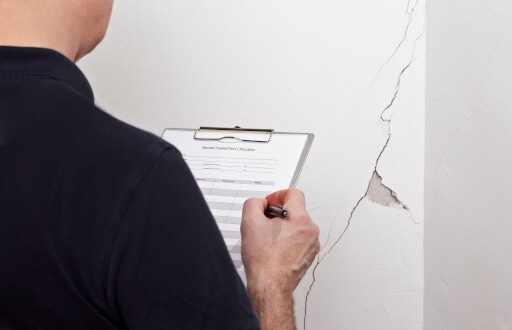
The time has finally come. With just a few weeks left until the end of your tenant’s lease, you must start thinking about the next step: lease renewals. Whether you’re aiming to retain your current tenant or find a new one, it’s important to approach the renewal process professionally and compliantly.
In this guide, we’ll offer you our best tips and tricks for the renewal process. From writing the perfect lease renewal letter to tenant retention strategies, here’s everything you need to know about lease renewals.
Key Takeaways:
- Lease renewals can reduce turnover costs and ensure steady income, making them a practical option for landlords, especially when retaining reliable tenants. However, landlords risk missing out on market-rate rent or being locked into another term with a problematic tenant.
- The ideal timeline for lease renewal notices starts at 90 days before lease expiration, with follow-ups at 60 and 30 days depending on the lease type. Sending notices early gives both parties time to plan and negotiate.
- Digital lease renewals are now the norm, with most landlords using email or property management platforms like Apartments.com for faster, more reliable delivery and e-signature capabilities.
- Flexible renewal options like month-to-month leases and short-term extensions can accommodate uncertain tenant or landlord plans, providing a middle ground when a standard renewal isn’t ideal.
- Offering incentives like rent discounts or upgrades can boost tenant retention, especially if tenants are considering leaving for financial or lifestyle reasons. Early communication and flexibility also increase the likelihood of a successful renewal.
Benefits and Risks of Lease Renewals
Offering a lease renewal can have both benefits and drawbacks. On one hand, it saves you the stress of filling a vacancy and turning over your unit. On the other hand, it can mean lower earning potential and ongoing issues with a problematic tenant.
If you’re not sure how to approach the renewal process, here are some key pros and cons to consider:
Benefits
Getting a tenant to renew their lease can be a huge win for a landlord. Not only does it affirm the quality of their unit and property management skills, but it also provides the following advantages:
- Lower costs: Finding new tenants can be expensive, between advertising, showing the unit, and potential vacancy periods. By renewing a lease, landlords avoid these costs and any disruptions in revenue.
- Consistent income: A renewed lease means another year of steady rental income without any gaps, which allows for easier budgeting and financial planning.
- Familiarity: Renewing a lease with an existing tenant means avoiding the unknowns that come with a new renter. Landlords already know their current tenant's payment history and behavior, making it easier to anticipate any issues.
Risks
Lease renewals can also come with their fair share of risks. However, these will often depend on the tenant, market conditions, and circumstances unique to the landlord. Some potential risks associated with lease renewals include:
- Below-market rent: When renewing a lease, landlords may hesitate to increase rent in fear of losing a good tenant. Or their tenant might try to negotiate the price. This can result in below-market prices and potential financial loss.
- Ongoing issues with tenants: While renewing a lease with an existing tenant can save time and effort, it also means dealing with any difficult behaviors or issues that may have arisen during the previous lease term.
- Long-term commitment: Renewing a lease for another term means eliminating the flexibility of renovations or using the property for personal use. Landlords should consider their business goals and priorities before committing to another lease term.
The Lease Renewal Process: Step-by-Step
So, how exactly does the lease renewal process work? While this process might vary depending on your state and local legal requirements, it will generally involve the following steps:
1. Review the existing lease
Carefully go through the current lease agreement to understand its terms, conditions, and expiration date. Identify any clauses that may need updating or adjustments before drafting a renewal.
2. Evaluate the tenant’s history
Assess the tenant’s payment history, communication, and adherence to lease terms. A good tenant with a positive track record is worth retaining, while issues may need to be addressed before renewing.
3. Compare market rents
Research current market rates for similar properties in your area. Conduct a rent comp report to determine a competitive rate that aligns with market trends and your financial goals.
4. Draft and send a lease renewal letter
Prepare a formal lease renewal letter specifying the updated terms, such as rent changes or lease duration. This serves as an official offer for the tenant to review and consider.
5. Negotiate/finalize renewal agreement
Discuss the renewal terms with the tenant and address any concerns or counteroffers they may have. Finalize the agreement once both parties are satisfied with the terms.
6. Sign and file
Have both parties sign the finalized lease renewal agreement. Keep a copy for your records and ensure it’s properly filed for future reference.
When and How to Send a Renewal Offer
The lease renewal letter is arguably the most critical step of the renewal process. It explicitly outlines you and your tenant’s next steps, whether it’s renewing the lease, revising the terms of your current agreement, or giving notice to move out. Plus, it provides a concrete record of your correspondence, which can come in handy should disputes arise down the road.
When to send a renewal offer
While expectations might vary from state to state, the standard lease renewal timeline is as follows:
- 90 Days Before Lease Expires: Landlords should send a renewal offer 90 days before the current lease expires. This gives both parties time to consider the decision and plan their next steps.
- 60 Days Before Lease Expires: If you have not received a response from your tenant after sending the first renewal offer, it is recommended to follow up with a second notice at least 60 days before expiration. If your tenant plans to forgo renewal, they must issue a formal notice to vacate by the 60-day mark.
- 30 Days Before Lease Expires: If your tenant is on a month-to-month lease, you should issue a renewal notice 30 days before their lease expires.
How to send a renewal offer
Most landlords send renewal letters electronically these days, either through email or property management software. This option is generally the quickest, cheapest, and most efficient way to reach tenants. It also provides a convenient way for tenants to respond and sign documents digitally, making things easier for everyone involved.
If you prefer the old-fashioned way, mailing a physical letter is also an option. This method offers a bit more of a thoughtful touch and also ensures tenants without reliable internet access still receive the notice. However, there’s always the chance that the letter gets lost in transit. So, it’s generally best to send an electronic version as well just in case.
What to Include in a Lease Renewal Letter (Lease Renewal Letter Template)
Every lease renewal letter must contain several key components, including the lease reference, new terms, rental rate, response deadlines, and other relevant instructions. As you compile your letter, make sure you’re covering all these bases. Or you can save yourself the stress by downloading our free Lease Renewal Letter Template.
Furthermore, if you’d like more inspiration for your lease renewal letter, here is a good example:
Dear [Tenant's Name],
I hope you're doing well. As your current lease for [Property address] approaches its end on [End date of current lease], I wanted to let you know about the option to renew. If you choose to stay, the new lease will begin on [Start date of new lease] and end on [End date of new lease], with a monthly rent of [Monthly rent]. The lease terms will remain mostly the same.
Please let me know your decision to renew or terminate the lease by [Date, typically 30-60 days before the lease ends], so I can make the necessary arrangements. If I don’t hear from you by this date, I’ll assume you’ve chosen not to renew.
If you have any questions or need further details, feel free to contact me at [Your contact information]. Thank you for your prompt response—I look forward to hearing from you soon.
Best regards,
[Landlord’s Name]
Alternatives to Standard Renewals
There are some instances where you or your tenant may not want to renew the lease in its current form. Perhaps your tenant is anticipating a move in the coming year, or maybe you have plans to renovate the property. In such cases, you can consider some of the following alternatives:
Month-to-month leases
Rather than renewing for another year, you or your tenant might prefer to switch to a month-to-month lease. In this agreement, the lease is renewed each month until either party decides to end the lease. When this time comes, a 30-day notice must be provided to the other party.
A month-to-month lease is a great option for those seeking flexibility. Perhaps your tenant moves away for a job opportunity unexpectedly or maybe you have plans to use the home for personal use within the year. In these instances, going month-to-month allows for a smoother transition and less hassle for everyone involved.
Shorter extensions
A lease extension is another great alternative for standard renewals. Rather than committing to another year, you or your tenant might choose to extend the lease by a couple of months. The standard extension periods are typically three or six months, which, like month-to-month options, offer more flexibility for both parties.
Automatic renewals
Upon signing the original lease, you and your tenant may have agreed to automatic renewals. This type of agreement states that the lease will automatically renew for another term unless one party gives notice to terminate the agreement. This can be an attractive option for tenants or landlords who don’t want to bother with renegotiating and signing a new lease each time the current term ends.
How to Encourage Tenants to Renew
Finding quality tenants isn’t always easy. So, if your current occupant is a good apple, do what you can to keep them. When it comes time to discuss renewing the lease, here are some ways you can encourage your tenants to stay:
Offer incentives
If you’re worried you might lose your current tenant, consider offering some incentives. Perks like a free month of rent, waived fees, or upgraded appliances could entice tenants to stay for another lease term. This can be especially effective if your tenant is considering leaving for financial reasons.
Communicate early and often
As discussed earlier, you should always address lease renewals promptly and honestly. Make sure to alert your tenant at the 90-day benchmark, and be open to any questions they may have. Fostering this kind of clear and upfront communication will make things less stressful all around and hopefully ease any nerves the tenant may have about renewing.
Be flexible
If you really want your tenant to stick around, try to accommodate their needs as best you can. If they need a different lease term or have specific requests, try to work with them and find a compromise. Remember, retaining a good tenant is often worth the extra effort or sacrifice.
How to Renew a Lease on Apartments.com
Lease renewals are available for property managers and owners who have listed their rental property on Apartments.com.
Once you’ve logged into your account, follow these steps to renew a lease:
- Access your Rental Manager navigation bar and select ”Residents & Leases”
- Click ”View Details” under the lease you’re looking to renew. Note: You can only renew a lease if it’s labeled as Ended, Ending Soon, or Current.
- When the resident screen pops up, select “Edit lease term.” Then select ”Renew lease term” from the dropdown menu.
- Your screen will then present options to select/adjust your lease terms. You’ll have the option to change the lease length, monthly rent, and include additional monthly fees. Once you’ve selected your preferences, click ”Continue.”
- Lastly, you’ll get the option to generate your lease document. You can either generate a lease renewal document, a completely new lease agreement, or opt out completely.
- Once generated, the lease renewal document will be sent to your tenant(s) and signed electronically. Your signature will finalize the document.
Still got questions? For more information on renewing a lease on Apartments.com, visit our Help Center.
This article was originally published on March 2, 2021, by Megan Bullock.
FAQs
How much can I raise the rent when renewing a lease?
The amount you can raise rent depends on local landlord-tenant laws and your lease agreement. Some areas have rent control, while others allow landlords to set increases at fair market value. Always check your local regulations before determining a rent hike.
Do tenants need to sign a brand-new lease, or can I use an old one?
Tenants typically need to sign a new lease agreement or a lease renewal addendum. While using an old lease as a reference is fine, a new document ensures all terms, including any updated rent or rules, are legally agreed upon for the new term. This also provides clear documentation for both parties.
What happens if a tenant doesn’t respond to the renewal notice?
If a tenant doesn't respond, it often signifies their intent not to renew the lease. In such cases, the lease usually reverts to a month-to-month agreement or ends on its original termination date, depending on your local laws and the lease terms. It's best to follow up to clarify their intentions and prepare for potential vacancy.
Can a landlord decide not to renew a lease?
Yes, a landlord has the right to not renew a fixed-term lease and does not have to disclose their reason for non-renewal in most states. Some common reasons a landlord might choose not to offer renewal include:
- The landlord wants to increase the rent for the property
- The landlord wants to sell or use the property for personal reasons
- The tenant has violated terms of the current lease agreement
Regardless of their reason, a landlord must adhere to legal procedures and provide proper notice before not renewing a lease. Failure to do so could result in legal consequences.











